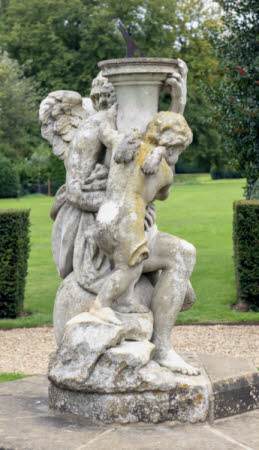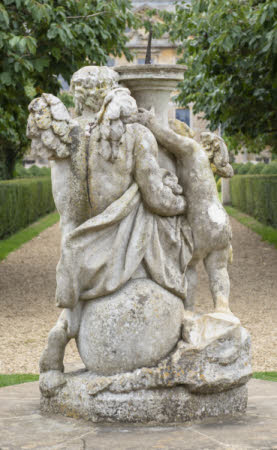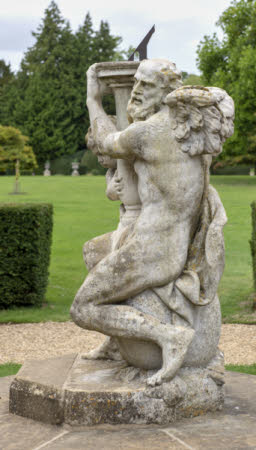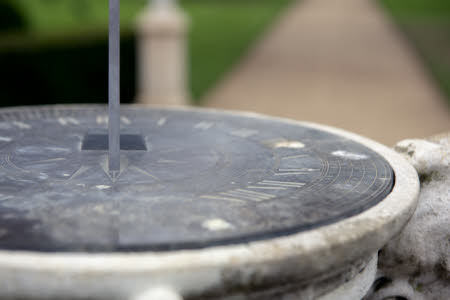Father Time with putto
possibly Caius Gabriel Cibber (Denmark 1630 - London 1700)
Category
Art / Sculpture
Date
circa 1688 - 1724
Materials
Portland stone
Measurements
1520 x 840 x 700 mm
Place of origin
Great Britain
Order this imageCollection
Belton House, Lincolnshire
NT 436789
Summary
Portland limestone mounted on sandstone, Father Time with putto, British, c.1688-1724. An allegorical depiction of time, represented as an elderly man with wings with an attendant putto. Mounted on two octagonal sandstone steps.
Full description
Father Time sits on a globe looking outwards, his searching expression conveys time's irretrievable escape. He and an attendant putto hold up a baluster within which a sundial is installed, a modern replacement for an original made in 1724 by Thomas Wright who was instrument maker to the Prince of Wales, later George II (1683-1760). A 1726 example by Wright can be seen at the British Museum, London (1958,1006.2461). Made of British Portland Stone, the sculpture is traditionally attributed to Caius Gabriel Cibber (1630-1700), although there is no archival evidence to prove this. The sculpture does not appear in Cibber’s list of works compiled by Ingrid Roscoe in A Biographical Dictionary of Sculptors in Britain 1660-1851, however it is known that the sculptor worked for various aristocratic patrons at estates near Belton around the time the present house was being built (1684-88). For stone figures Cibber was well-regarded as he was willing to cut costs by using local materials rather than expensive imports. In 1680 the sculptor produced several statues for the gardens of Belvoir Castle, Leicestershire, which is on the other side of Grantham to Belton House. In 1685-7 he carved for Thoresby Hall in Nottinghamshire, and, further afield, for Chatsworth, where, from 1687, he completed an altarpiece for the chapel and statuary for the great staircase and gardens (1688-91). The group appears in the Tyrconnel inventory of 1754 listed as 'sundial'. Alice Rylance-Watson October 2018
Provenance
Acquired by John Brownlow, 1st Viscount Tyrconnel (1690–1754). Purchased with a grant from the National Heritage Memorial Fund (NHMF) from Edward John Peregrine Cust, 7th Baron Brownlow, C. St J. (b.1936) in 1984.
Credit line
Belton House, The Brownlow Collection (acquired with the help of the National Heritage Memorial Fund by the National Trust in 1994)
Makers and roles
possibly Caius Gabriel Cibber (Denmark 1630 - London 1700), sculptor Thomas Wright (1711 - 1786), scientific instrument maker





